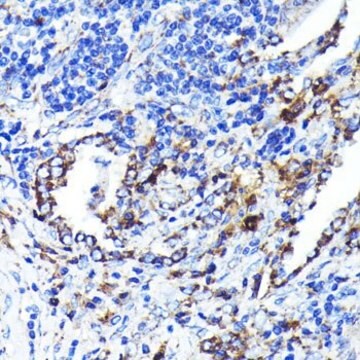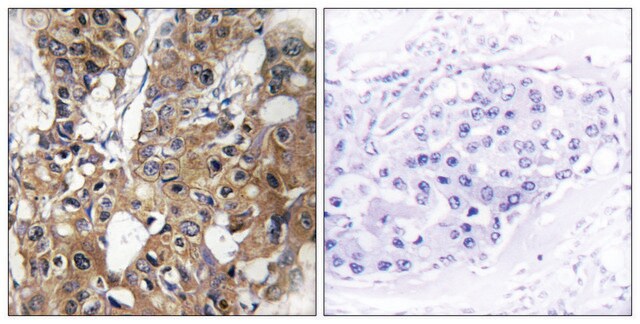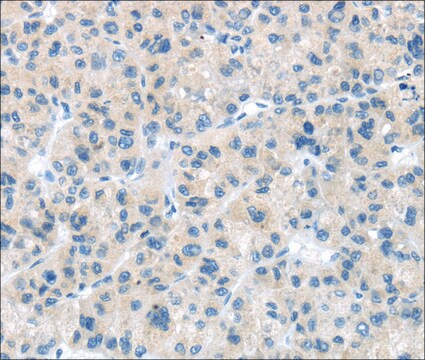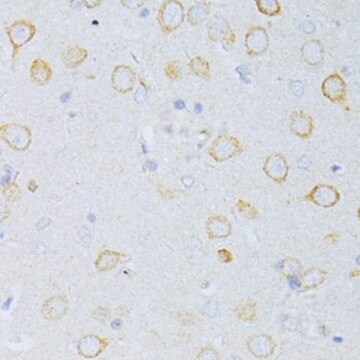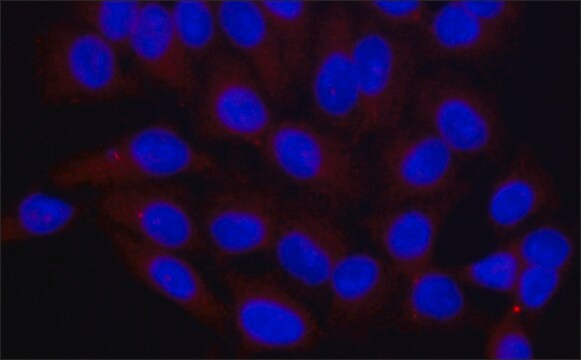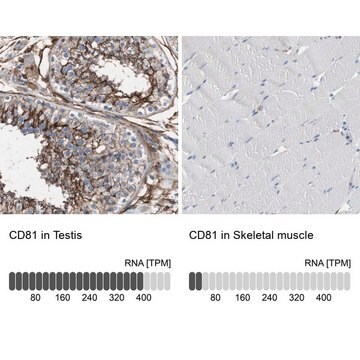C9993
Anti-CD9 antibody produced in rabbit
~1 mg/mL, affinity isolated antibody, buffered aqueous solution
Sinónimos:
Anti-BA2, Anti-BTCC-1, Anti-DRAP-27, Anti-GIG2, Anti-Growth-inhibiting gene 2 protein, Anti-Leukocyte antigen MIC3, Anti-MRP-1, Anti-Motility related protein, Anti-TSPAN29, Anti-p24 antigen
About This Item
Productos recomendados
origen biológico
rabbit
conjugado
unconjugated
forma del anticuerpo
affinity isolated antibody
tipo de anticuerpo
primary antibodies
clon
polyclonal
formulario
buffered aqueous solution
mol peso
antigen ~25 kDa
reactividad de especies
human, mouse, rat
concentración
~1 mg/mL
técnicas
immunohistochemistry: 1:100-1:250
western blot: 1:500-1:1,000
Nº de acceso UniProt
Condiciones de envío
dry ice
temp. de almacenamiento
−20°C
modificación del objetivo postraduccional
unmodified
Información sobre el gen
human ... CD9(928)
mouse ... Cd9(12527)
rat ... Cd9(24936)
Descripción general
Inmunógeno
Aplicación
- immunostaining
- identification of hypoxia-induced mesenchymal stem cells (MSC-MVs)
Acciones bioquímicas o fisiológicas
Descripción de destino
Forma física
Cláusula de descargo de responsabilidad
¿No encuentra el producto adecuado?
Pruebe nuestro Herramienta de selección de productos.
Código de clase de almacenamiento
10 - Combustible liquids
Punto de inflamabilidad (°F)
Not applicable
Punto de inflamabilidad (°C)
Not applicable
Equipo de protección personal
Eyeshields, Gloves, multi-purpose combination respirator cartridge (US)
Certificados de análisis (COA)
Busque Certificados de análisis (COA) introduciendo el número de lote del producto. Los números de lote se encuentran en la etiqueta del producto después de las palabras «Lot» o «Batch»
¿Ya tiene este producto?
Encuentre la documentación para los productos que ha comprado recientemente en la Biblioteca de documentos.
Los clientes también vieron
Nuestro equipo de científicos tiene experiencia en todas las áreas de investigación: Ciencias de la vida, Ciencia de los materiales, Síntesis química, Cromatografía, Analítica y muchas otras.
Póngase en contacto con el Servicio técnico